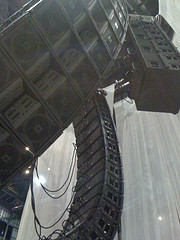
Year of the System 2010: Let’s Talk About Line Arrays
So, let’s just get right to it and talk about line arrays. Many would debate me on this, but in my opinion our room is on the bubble for implementing line arrays. In fact, the reason I even feel I can say that is because over the last three years I’ve had just as many people I respect and trust say that our room would be great for line arrays as I’ve had say it would best be done with a conventional, traditional, distributed system–think clusters of trapezoidal speakers up front with delay speakers filling in the gaps in the back. This has, honestly, been pretty frustrating for me in seeking wisdom on a direction we should steer the system design for the room. The reality is like every room, there is no perfect solution for our room. Any system we put in place will be a series of compromises. That said, as you might have guessed from the title of this post, line arrays have always been a prime contender for the new system.
The two rooms I work in definitely have their challenges in attempting to design a loudspeaker system that will maximize the experience we want to create for the largest number of attenders. In the case of our east auditorium, the main floor seating area is wider than it is front to back measuring about 200′ x 100′; I have often referred to it as a giant shoebox. There is also a five row balcony that starts about 85′ back running the entire width of the room. Our low steel is at about 32′ with a layer of Lapendary acoustic treatment covering the entire roof at that height.
Now, there seems to be a backlash against line array systems these days. Line arrays have really only been on the scene in a big way for the last ten years. The first big line array to make its mark was V-DOSC which showed up in the mid-nineties and 15 years later is still an incredibly popular loudspeaker system. V-DOSC’s impact changed the market in a big way especially over the last 5 years, and now you can’t find a trade magazine without a photo of a vertical line of speakers, and pretty much every major loudspeaker manufacturer has their own product line.
I think it is natural for any technology so widely adopted in a short amount of time to be received with a certain skepticism. The line array phenomenon has in some ways reached proportions that could easily make some wonder if it’s simply a fad, and many have classified it as such. Another downside to the impact line arrays have had on the market is that there are a lot of situations where they have been poorly implemented, but this happens all the time when people make technology decisions simply because “everyone is doing it” and not out of careful evaluation of a situation. But in spite of some of the more negative publicity floating around these days about line arrays, one has to ask, if line arrays are bad, why did they ever become popular in the first place?
I think the popularity of line arrays is really pretty basic, although, it is seemingly overlooked in nearly every article I ever read. What if a properly implemented line array simply sounds better to most ears than most conventional/traditional systems?
Before really looking at this, let me address a couple things. Yes, I’ve heard shows mixed on line array systems that were bright, harsh, painful, etc, etc, etc. As I mentioned above, there have been a lot of people who have tried and failed, but I would contend that operator error in implementation and mixing has more to do with shows sounding bad than the technology in use. I’ve also heard a lot of shows mixed on traditional systems that were bright, harsh, painful, etc, etc, etc, but you don’t see a lot of people typically blaming the PA at those gigs….
The reality is a traditional system done right can rock. They STILL have a purpose and function where they really are the BEST direction to go with a sound system. However, I can say without a doubt that the best sounding shows and events I’ve ever heard and experienced were all done with line arrays. Coincidence? I don’t think so. I’m even at a point where I want to turn around and head for the door when I walk into a large scale concert in a shed or arena where they aren’t using line arrays. In fact, one of the biggest reasons I skipped Paul McCartney when he was in town last summer was because I knew he was using an old school rig, and I knew I would be disappointed with the show. And there’s no way I’m going to see Paul McCartney and walk away disappointed. When you start to understand the physics of the interaction that takes place when you start putting a lot of speakers together, it becomes easier and easier to walk into a room and look at a system and be able to start seeing where some of the challenges/compromises/problems will be.
So let’s take a loose look at the technology behind line arrays. I’m probably going to way oversimplify some things here so if you really want to read up on the science, I would suggest checking out the Wavefront Sculpture Technology Fundamentals in the V-DOSC manual and the Meyer Sound Line Array Theory Q&A.
So, the funny thing about line arrays is the science behind them isn’t new. Line arrays work by using constructive and destructive interference to achieve tight pattern control in the vertical plane. They ultimately use the same physics that occur whenever we put two speakers playing the same stuff together.
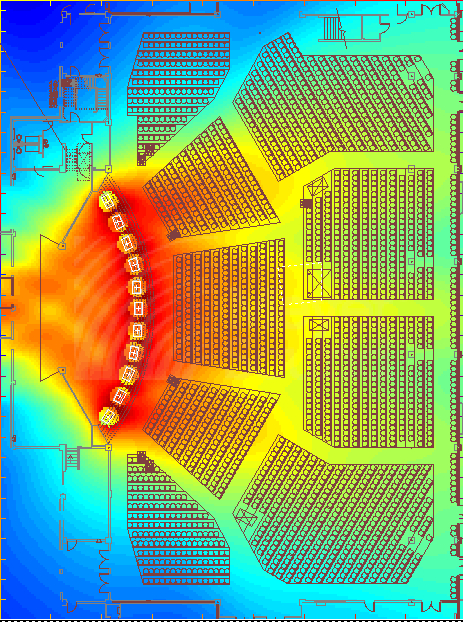
Meyer 700HP @ 80 Hz
A typical speaker element tends to want to radiate omni-directionally in space assuming we just have a driver floating in space. Placing two or more elements playing the same tune in proximity will alter the radiating pattern of the elements at specific frequencies depending on the distances involved in the spacing of the elements and the number of elements covering a given location. In a nutshell it’s constructive and destructive interference–sometimes called comb filtering–at work. When the listener is on-axis to the elements, they will work together at certain frequencies depending on the distance between the acoustic centers of the elements and the overall distance between the elements.
For example, we can easily see this behavior in the sub-woofer arrays we’ve used around our stage for special events. Notice in the image of 700HP’s how the width of the pattern at 80 Hz is dictated by how wide our array is and the angling of the cabinets and “cools off” on the outsides as we get outside the length of the array. We could achieve the same type of control in the vertical plane if we were to array those subs vertically, although it would be silly and the weight would probably bring our roof down….hmmmmmm…..
Historically, however, it has been much harder to achieve this type of pattern control at higher frequencies using multiple elements because there is another side to this. To make multiple elements work in our favor, we need to space those elements within our array so that the distance between acoustic centers of the elements is less than 1/2 the wavelength of the highest frequency we want to control. Blah blah blah. So, in a nutshell, lots of speakers as close as possible “couple” together to create the perception we’re hearing ONE element instead of multiple elements.
This is much easier to achieve at low frequencies because the longer wavelengths give us a lot more flexibility. For example, 80 Hz has a wavelength of 14′, so if we space our elements (in the case of a sub, the entire sub acts as an element) so that the distance from center to center is 7′, the elements will work constructively at 80 Hz and below. Additionally, if our combined elements are arrayed beyond our wavelength–14′ in the case of 80 Hz–we get a controlled pattern at 80 Hz as wide as our elements are arrayed. Conversely, if we shorten our array to less than 14′, the multiple elements would radiate more omni-directionally while giving us an increase in acoustic power at 80 Hz. Think of a single stack of subs stacked on one side of the stage. You get more power, but since the length of the “array” is shorter sound spits everywhere around the subs and all over the stage.
Now, what L-Acoustics did with V-DOSC was create a practical way of configuring and manufacturing boxes that arranges the loudspeaker elements to utilize constructive and destructive interference across the entire bandwidth of the speaker array. The result is a vertically arrayed line of speakers is perceived as ONE speaker by the listener. Ideally, we just need to make sure our line is longer than the lowest frequency we want to control. If our subs are crossed over at 80 Hz, we would ideally have a vertical array greater than 14′. Since we’re arraying things vertically, our pattern control is only in the vertical plane so what about the horizontal?
A line array box typically has a wide horizontal pattern minimizing the need to place multiple speakers next to each other in the horizontal plane to achieve coverage across a wide listening area such as my room. This is a big deal and maybe the key to why I think they sound better, and we’ll get to that in a moment.
Now line arrays and trap boxes both achieve high frequency pattern control using a horn. In the case of a line array, the horizontal coverage at higher frequencies is tailored to fit the low frequency width; d&b Audiotechnik calls it their nominal dispersion angle. The nature of the placement and number of low frequency drivers in a line array box gives us an ever changing horizontal coverage pattern as frequency changes. Matching the horn coverage pattern to the low frequencies is not an exact science and something that each manufacturer will make their own compromises with.
On the other hand, a trap box’s high frequency horizontal coverage is typically designed based on the splay between boxes so that pattern overlap between multiple boxes is minimized at the seam. If there is no overlap we will be left with high frequency dead zones at the seams so an attempt is made to get the coverage patterns as close as possible with minimal overlap. However, the reality is if we take two or three 40 degree trap boxes and cluster them together to achieve the same horizontal coverage as a single line array box(remember, they tend to be very wide), there is probably going to be some overlap in the horn patterns at high frequencies especially at the seams between boxes. The problem with this overlap is it will create destructive interference at those high frequencies which leads to a smearing of the sound. Those phase related problems occur because the acoustic centers of the horns are too far apart to work constructively; at 8000 Hz, we would need the center of our horns to be less than an inch apart. While two boxes might be designed to go next to each other, they’re not designed to “go together” if you know what I mean.
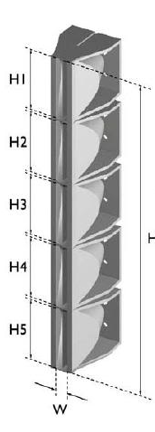
V-DOSC Waveguide
So you might ask, why don’t we get the same problems in the vertical plane when using a line array that we get in the horizontal plane of a trap box? This is due to the waveguide design used in line array boxes. The waveguide essentially creates a miniature line array within the box which in turn creates a very tight vertical pattern control at those high frequencies. The result is very little interaction between boxes at very high frequencies, but when there is overlap it tends to work more constructively than destructively. Manufacturers like to talk about this almost like a ribbon driver where we basically have a single ribbon running the length of the box and even entire array. It has to do with things like surface area of the radiating surface and angles and distances, and you can read all about the math in appendixes in the V-DOSC manual–I’m still trying to fully wrap my head around it. Figure 1 below taken from the V-Dosc manual is probably the best depiction I’ve seen of what is happening with a line array compared to a traditional setup of multiple boxes clumped together.
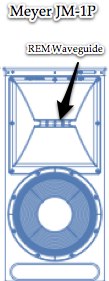
On a side note, one thing that is cool about all this is we’re starting to see the technology used for high frequencies in line arrays literally turned on its side and implemented in trap boxes. Two boxes that come to mind are the L-Acoustics ARC and Meyer Sound’s new JM-1P, and I expect we’ll be seeing more and more of this in the coming years.
So what does all this technology have to do with why I think line arrays might sound better than a traditional cluster of trap boxes? I think it basically comes down to the amount of interaction between boxes and the nature of that interaction when it takes place. While a traditional trap box might be designed to be clustered in a horizontal array, the nature of the box design doesn’t create the coherent and sculptured wavefront response that an intentionally designed line array creates. In fact, the V-DOSC manually really spells this out clearly:
For traditional horn-loaded systems, coherent summation is not possible at higher frequencies since the wavelengths become progressively smaller than the physical separation between the acoustic centres of horn and driver assemblies….as a result, interference occurs throughout most of the high frequency range.
L-ACOUSTICS V-DOSC Manual Version 4 – Page 14
I believe that the more coherent operation of a line array creates an increased clarity for a listener especially in the mid and high frequencies that are so essential to vocal intelligibility. In a small room where a single box can be used to achieve the desired coverage and SPL, there would be no real advantage to a line array. However, as you start piling boxes together for larger rooms, the coherency of a line array system is hard to beat with a traditional setup.
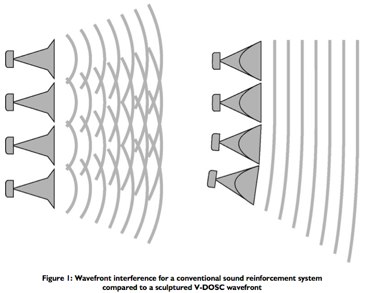
Now, that said, line arrays are NOT a magic bullet. There are some downsides and challenges to them. The first thing being you need a lot of boxes and trim height to maintain pattern control and achieve front to back coverage, and that vertical pattern control is a great thing to have. Think about it. If you have a pastor on stage with an omnidirectional lav or headworn mic standing under a speaker stack that is spilling 200 Hz all over the stage, how much fun is it? With vertical pattern control, that 200 Hz stuff can be more precisely directed into the listening area. You’ll just need 5 feet worth of boxes to make it work. If you want to go lower in frequency you’ll need even more boxes. Additionally, you will need a lot of boxes to cover your listening area as the back row moves farther away from the stage and your stadium and balcony seating rises. A line array will act like a spotlight in the vertical plane. Tilting that plane down helps cover from the front to the back of your listening area, and the best way to widen that beam is to add boxes with small amounts of splay between cabinets. Just think of a flashlight with an adjustable beam. If you focus it into a tighter beam, you get more intensity. As you widen it to cover a larger area, your light intensity decreases.
Another downside relates to imaging, and this would be my least favorite aspect of line arrays. The extended nearfield effect of line arrays can often have a tendency to affect a listener’s ability to localize sounds so that the image seems to pull in the direction of the array closest to the listener. I’ve been in a lot of rooms where imaging was great standing in the middle of the two arrays, however, as you move off-center everything shifts towards the closer array. It’s not exactly an ideal phenomenon if you have someone standing in the middle of your stage and speaking for 30 minutes or more.
In the summer of 2008 I was able to spend a day with Tom Petty’s crew at our local shed amphitheater (there’s video of it here). The show was one of the best I’ve ever heard utilizing d&b J8’s for the main arrays. Now, the d&b J series is my favorite loudspeaker on the market today. The stories I’ve heard about the L-Acoustics K1 make me wonder if I’ll change my mind once I hear them, but for now I really dig the J’s. They just get right in-your-face in a very cool way, but I digress. The Petty show sounded great, but when I would walk 10-15′ outside of the FOH location, the image pulled towards the array I was closest to.
In the summer of 2009 I spent an afternoon with the crew from Spectrum out with Hillsong United in the same venue. The PA was again a d&b J series and again sounded great. However, this time the main arrays were J12’s instead of J8’s. The difference between the two boxes is J8’s cover 80 degrees horizontally box while the J12’s cover 120 degrees. This time as I walked outside of the same FOH location, the imaging was maintained. It didn’t pull towards one array until I was close to standing in a location that was no longer between the two arrays where it was actually desirable for the imaging to work that way. I guess my point is that the imaging issues that often crop up with line arrays can be dealt with depending on the box and how it’s implemented. And in spite of any imaging issues, I can still see applications where the increased clarity might be a worthy trade-off for imaging.
So what about line arrays in my room? Why are we looking at them? Well, for starters let’s just talk about the sound quality. We LIKE the way they sound. Given how much of a focus we put on sound quality, this is a big deal. One of the challenges with our current systems is they don’t have the clarity that a modern PA can deliver and can be fatiguing to listen to over longer periods of time. The next reason we’re interested is our room is very wide. The wide horizontal coverage of a line array gives us a more consistent coverage over a larger portion of our seating area.
In our current setup, things tend to sound best the closer you get to the center of the room, however, our outer seating areas are compromised. If I have any real beef with our current system, this would be it. Since our Sunday experiences are designed with the first-timer in mind, it can be very frustrating to know that what is heard on the outsides of the room is not what we’re intending. The nature of a church the size of ours is it can be a challenge for first-timers to get into the good seats because they don’t know the system and how early you need to be in the room to get into an optimal seat. First timers might also want to be in those farther out sections to maintain anonymity as they check the place out. Regardless of how they get in those seats, I know they’re there, and I just want them to have an experience as close to that of those in the good seats as possible.
Of course, one of the downsides to line arrays in our room is trim height. We have around 9 feet to work with in order to maintain good sight lines to our screens. On the plus side, this gives us the potential to achieve vertical pattern control down to about 125 Hz. Since this is typically where I cross my tops over I feel OK if we would have to cross them lower and lose some pattern control between 125 and 80 Hz. However, to get that full 9 feet we need to pull the arrays up literally against the lapendary. This means if we want the arrays to hit our balconies, they need to shoot through a lot of lighting gear and truss which means there will be significant high frequency shading in those seats.
Another downside is to achieve good front-to-back coverage in the room, we will need to splay the array quite a bit. Line arrays tend to work best with a minimal amount of splay between boxes. As the splay increases, there can be a tendency for the high frequencies to become increasingly beamy due to the tight vertical pattern of the boxes. However, it should also be noted that conventional systems tend to create the same problem in the horizontal plane.
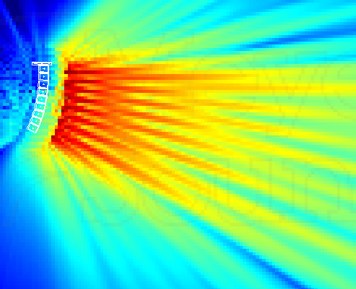
Meyer MICA’s @ 4000 Hz – Vertical Pattern
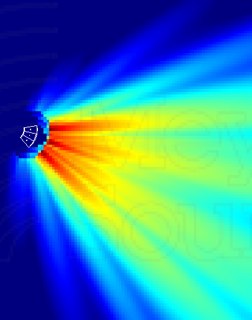
Meyer JM-1P’s at 4000 Hz – Horizontal Pattern

Meyer MICA’s @ 4000 Hz – Vertical Pattern

Meyer JM-1P’s at 4000 Hz – Horizontal Pattern
To deal with the high frequency shading in the balconies will require some sort of a delay situation which could be handled in a couple of ways. One option would be to cover only the floor with the arrays which would require more of a full range speaker for the balconies as the vertical pattern control of the array will steer everything away from the balconies. Another option is to point the arrays at the balcony and use delays as fills to make up for the high frequency shading. The downside here is even more splay would be required to cover the listening area front to back and up into the balcony. As I said at the beginning of the post, there is always a compromise in designing a system.
But I will leave you with one last thing that is a major incentive for us in exploring the option of line arrays in our room. We have already had line arrays in our room for some special events. In fact, the best I ever heard the room was when the Thirsty Conference invaded us in 2007. They brought in a d&b rig that was rigged in a less than optimal location and shorter than it should have been, but it sounded great. We can model things all day long, but once you add in things like floors and ceilings and chairs and big bags of water, things act a little differently and are sometimes more forgiving than a strict computer model.


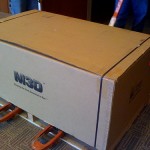 Previous Post
Previous Post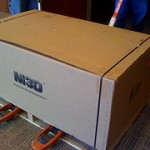 Next Post
Next Post




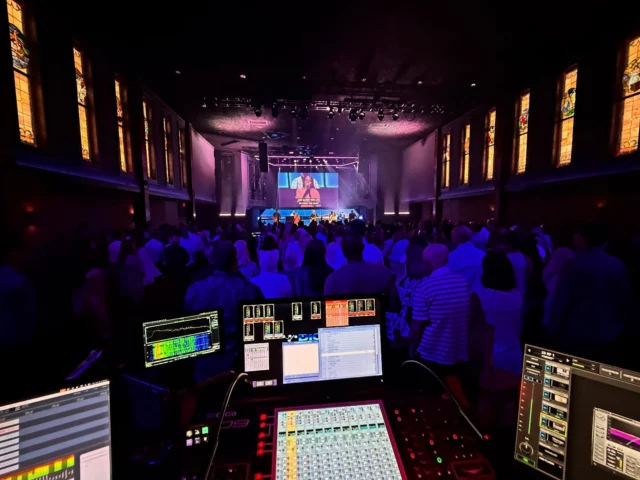

 The best mix moves aren’t always the loudes
The best mix moves aren’t always the loudes




“if line arrays are bad, why did they ever become popular in the first place?”
I read a tech rider for a band last week. A nobody act, really. No offense to them but I never heard of them and chances are neither have you. And they listed a handful of speakers that were a non-negotiable on their list of “acceptable” systems. They were Meyer, JBL Vertec, V-DOSC… you get the point. All line array. And of course every A list band wants the latest and greatest technology to make them sound amazing, so they choose the best of the best, as do the production companies putting on their gigs. And because everyone wants to host a concert for the Red Hot Chilli Peppers or Miley Cirus they buy the systems that are on their tech rider. But the B list and C, D, and E list bands want to be like the A listers. So, very cheekily, they model their tech riders in the same fashion. Line array’s only, and it’s getting harder and harder to negotiate with them. So, the natural thought is to cave in, throw in the towel and make the switch.
Thing is, though, I have a feeling that line arrays are a bit of a fad. We work in a very fashion based industry. I don’t think line arrays will go away, but they won’t be the knees of the bee that everyone says. But I suppose I’m just biased. I have a feeling the next fad in the next 5-10 years will be hyper-sonic / LRAD type speakers. There’s a lot of research and funding being thrown at it. And a few products are available, and in use in Universal Studios, Disneyland, and many science museums. It’s just itching to be put on some band’s tech rider.
Line arrays aren’t a fad. In fact, the LRAD stuff you mention is really just an extension of the same technology and physics at work in a line array. If they are a fad, why are newer speaker technologies building on the same principles and concepts?
I have to agree with Dave on the LRAD stuff. But seriously, I do agree with you Dave on the line array stuff. We just finished having our first Sunday service in our new arena and I couldn’t be happier with the system we have. I love working with it! Granted I do see what you are saying about the splay angle of the speakers. Or room, though it is very neutral and one of the best sounding rooms I’ve been in, has the same problem with the Hass effect. When I get to a certain point of walking around the room, I do hear the array I’m closest to the most. It is a drag, but I think I love the fact that it sounds “like one speaker” in the room.
Oh and btw, from reading your post it seemed like I was revisiting the introduction to array technology’s that Bob McCarthy does in Chapter 2 Section 1 of his book. Now I kind of understand it better, thanks! lol
Did you just call me a big bag of water?!
Seriously, great post, Dave. Thanks for going into so much detail in a layman’s sort of approach. I have been wanting to learn more about line arrays having used traditional cluster/delay setups for years.
Are you installing the M3D Line Array? Just was wondering about your comparisons between Mica, Melodie, and M3D. Great post
All will be revealed very soon….
Line arrays are not a fad, but it should be pointed out that generally what is popular in the touring world becomes the defacto standard of what is “best”. Line arrays took off in such a huge way in large part due to the fact that they can be flown in half the time with fewer fly points and usually weigh less (unless its Meyer:). Line arrays by there very nature intentionally involve multiple arrivals to create destructive interference. And multiple arrivals (it would seem) can not sound as good as a single arrival. I have yet to see a line array studio monitor.
However, as Dave made clear everything is a set of compromises, Line arrays are not better, just offer a different set of weaknesses. In bringing audio to a very large group of people in many cases it is the superior solution.
What really does irk me though is to see line arrays in installations where they have no business at all. Four boxes is not a line array and no your 200 seat church does not need one. In this sense line arrays are definitely a fad. The traditional trap box still has plenty of merit, and in many cases will sound much better and cost much less.
Great post Dave btw… and if you liked the D&B so much why Meyer?
Well, I think multiple arrivals can be made to sound almost as good as a single source if you can accurately predict what is going to happen when they arrive. That said, I would always rather have a single speaker if I could get the coverage and SPL needed.
As for Meyer over everything else available, that’s a complicated answer, but I’ll try and do something on the decision making process for myself and how it gets applied to an organization or client I work for at some point.
Done a bit of thinking. I think I’m just not used to line arrays yet. In the same way that I’m not used to being able to count the number of pores on Kiera Knightly’s face in High Definition. Or the color temperature of LED light bulbs. It’s a transition that I need to get used to. Yes there are things about the line array sound that are weird and I don’t particularly like, but if this is the future, I’m going to have to learn to make that transition, like counting pores.